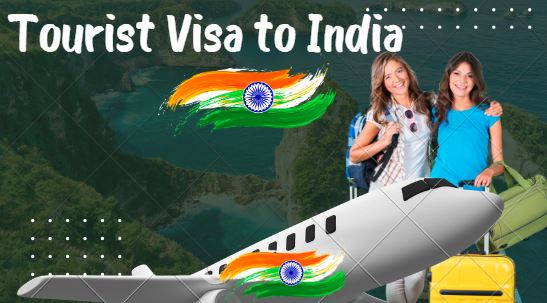If you’re looking to visit India for recreation, sightseeing or casual visits to friends and family, a tourist visa might be the perfect choice. However, you should note that this type of visa is not valid for visiting Protected/Restricted and Cantonment Areas.
To get a visa, you must have a valid passport and proof of residence. You also need to submit a receipt for the visa fee.
Getting a tourist visa
In order to get a tourist visa, you must have a valid passport and meet the requirements of the country you are visiting. This includes meeting visa fees and having a sufficient amount of funds to support your stay. You also need to be able to provide proof of travel, such as a return ticket and hotel bookings. It is best to apply well in advance of your trip so you can avoid any delays.
Typically, a visitor visa will last for three months to one year and is good for multiple entries. However, it depends on the country and may require a visa interview. In addition, you must have a valid reason for extending your stay in the country. For example, if you are staying in a medical facility and need to extend your stay, it is worth asking the doctor if you can do so.
To apply for a visa, visit the official website of your country’s consulate. You will need to fill out a form, provide supporting documentation, and submit a photo. Some countries will also require fingerprints. The US, for instance, requires fingerprinting for all visa applicants.
Some countries offer e-Visas, which allow visitors to enter the country without an in-person interview. These are available for citizens of 166 nations, including most EU and EEA members, Australia, New Zealand, and many Asian and African nations. The e-Visa is valid for 30 days, one year, or five years, depending on the country.
Tourist Visas are valid for tourism, recreation, or casual visits to meet friends and relatives. The validity of a Tourist Visa is not transferable, and the visa must be used within the expiry date. The visa must be used to travel to the designated location, and not to other locations. You must also leave the country before the expiry date. If you do not, you will be considered an overstayer and will need to pay a fine. The visa fee is payable online in USD, via Internet Banking or credit card. Applicants are also required to upload a recent front-facing photograph, the photo page of their passport, and a copy of the visa receipt.
Applying for a tourist visa
India is a vast and complex nation with a dense tapestry of cultures and landscapes. A tourist visa can allow you to explore a portion of this incredible country. However, there are some limitations that you should know about. These restrictions include the length of stay and whether or not you can overland travel. If you are interested in a long trip, it is important to plan ahead and make sure that your visa will allow you to visit all the places you want.
Unless you are a citizen of one of the visa-exempt countries, you will need to apply for a visa before entering India. The Indian government has established rules and regulations that determine who can get a visa, the cost and duration of the visa, and what activities are permissible on a particular type of visa. Depending on your nationality, you may need to submit proof of return transportation and sufficient funds for the duration of the trip.
You can apply for a tourist visa through an online portal, or you can visit your local Indian Embassy or consulate to apply in person. The application process can be time-consuming and complicated, so it is best to start early. The embassy may require additional documents, such as photographs and an itinerary. In addition to this, you will need a passport that is valid for six months or more. It must also have two blank pages for the visa.
If you are traveling to protected or restricted areas, you will need a permit. This can be difficult to obtain, but it is worth the effort if you are going to these locations. The government will usually only issue these permits for a short period of time, but it is worth trying anyway.
You can also extend your stay on a tourist visa, but you must do so before the expiration date. You can do this by visiting a foreigners’ regional registration office, or by providing proof of a medical emergency or theft of your passport. In most cases, you will need to pay a fee to extend your visa.
Getting a tourist e-Visa
Getting a tourist visa is an important part of planning your trip to India. You will need to provide proof of your identity and travel plans, as well as a passport that is valid for at least six months beyond the date of your entry into India. If your passport expires before this date, you will be deemed to have overstayed your visa and may be subject to criminal or civil penalties.
If you’re travelling to India on a short-term holiday, it’s likely that you’ll need to get an online e-visa. This process is much quicker than getting a traditional stamped visa, and it’s available to citizens of most countries. The e-visa is linked to your passport through an electronic system, and you’ll usually have to show it to airport officials upon arrival.
The requirements for e-Visas vary by country, but most include proof of identity, a travel itinerary, and a return ticket. Some also require a medical insurance policy that covers the entire duration of your trip. In addition, the e-Visa must be endorsed by a government official or a travel agent.
You can apply for an e-Visa through the official Indian website. The application requires a few basic details, including your name, nationality, and passport number. You must also select the type of visa you want. Some types of e-Visas are only valid for a certain period of time, so you should apply as early as possible.
Once you’ve submitted your application, you’ll need to pay the visa fee. This can be done by credit card or e-banking service. Then, you’ll receive an e-mail with your visa approval. If you’re traveling to multiple destinations, you can request for an e-visa that is valid for several weeks or months.
The e-Visa is valid for arrival at 25 designated airports, including Delhi, Mumbai, Kolkata (Calcutta), Chennai, Bangalore (Bangalore), Thiruvananthapuram (Trivandrum) and Cochin. It is not valid for visits to Protected/Restricted/Cantonment areas. Applicants should make sure that their passport is valid for at least 6 months from the date of entry into India and has two spare pages for the ETA.
Getting a traditional stamped visa
If you want to travel to India, you need a visa. Depending on your purpose of travel, you may need to apply for a different type of visa. The Indian government offers a variety of different types of visas, including e-visas. E-visas are a convenient way to travel to India, as they eliminate the need to visit an embassy or consulate.
To apply for an e-visa, you must have a valid passport and a computer with an Internet connection. You will also need a recent front-facing photograph. The photo should be clear and taken within the past three months. You will also need to submit proof of identity and a letter from your employer or sponsor.
You can fill out the DS-160 form online, which will include basic information about yourself and your purpose of travel. You will also need to pay a fee for the visa application. You can pay the fee using a credit or debit card. Once your application is submitted, you will receive a confirmation email.
The processing time for a traditional stamped visa can be quite long. You can minimize this wait by applying for your visa in advance. However, it is important to note that there are several factors that can affect the processing time of your visa. These include administrative processing and security checks, which can take several months.
Getting an India visa in the US is easy with CIBTvisas, a service that helps travelers complete their applications online. The CIBTvisas service can help you avoid wasting time waiting in line at the airport and reduce your stress before your trip to India. CIBTvisas can also help you enroll in the Global Entry program, which is an excellent way to speed up your airport experience.
A tourist visa is a great option for tourists visiting India. This visa allows you to stay in the country for up to 180 days and can be used multiple times. To qualify for a tourist visa, you must be a citizen of the United States and have a valid passport. In addition, you must have a plan for your trip and be able to prove that you will return home after your trip. You must also be able to show that you have financial resources to cover your expenses during your stay in India.





